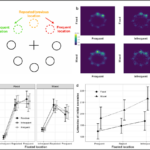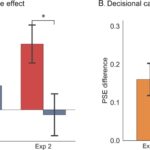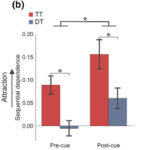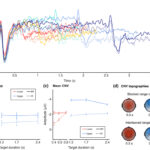Despite the crucial role of complex temporal sequences, such as speech and music, in our everyday lives, our ability to acquire and reproduce these patterns is prone to various contextual biases. Recently, Baykan et al. (2023) examined how the temporal order of auditory sequences affects temporal reproduction. Participants were asked to reproduce accelerating, decelerating, or random sequences, each consisting of four intervals, by tapping their fingers. The results showed that the reproduction and the reproduction variability were influenced by the sequential structure and interval orders. The mean reproduced interval was assimilated by the first interval of the sequence, with the lowest mean for decelerating and the highest for accelerating sequences. Additionally, the volatility and the last interval of the sequence affected the central tendency bias, resulting in a stronger central tendency in the random and decelerating sequences than in the accelerating sequence. A Bayesian integration model could accurately predict behavioral outcomes by factoring in the ensemble mean of the sequence, individual durations, and the perceptual uncertainty associated with the sequential structure and position. The findings highlight the critical role of the temporal order of a sequence in temporal pattern reproduction, with the first interval exerting greater influence on mean reproduction and the volatility and the last interval contributing to the perceptual uncertainty of individual intervals and the central tendency bias.
References
Baykan, C., Zhu, X., Allenmark, F., Shi, Z. (2023) Influences of temporal order in temporal reproduction, Psychonomic Bulletin & Review, in press.




